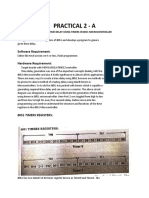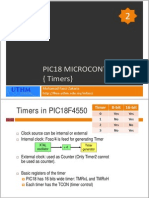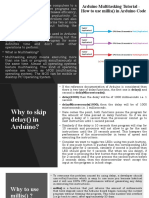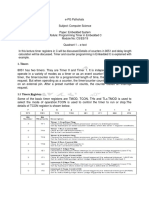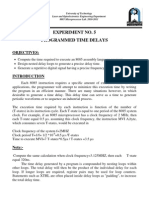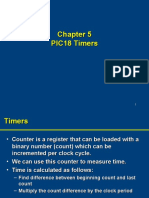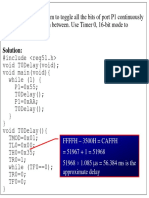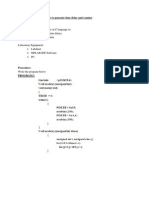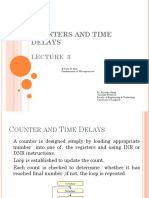0% found this document useful (0 votes)
27 views1 pageDelay Functions
This document describes delay functions for PIC microcontrollers. It provides function prototypes and notes for delay functions that allow delays in multiples of instruction cycles. Example delays are provided to demonstrate how to calculate delays based on the instruction cycle time and multiplier used in the function.
Uploaded by
Effiq ShahzrulCopyright
© © All Rights Reserved
We take content rights seriously. If you suspect this is your content, claim it here.
Available Formats
Download as PDF, TXT or read online on Scribd
0% found this document useful (0 votes)
27 views1 pageDelay Functions
This document describes delay functions for PIC microcontrollers. It provides function prototypes and notes for delay functions that allow delays in multiples of instruction cycles. Example delays are provided to demonstrate how to calculate delays based on the instruction cycle time and multiplier used in the function.
Uploaded by
Effiq ShahzrulCopyright
© © All Rights Reserved
We take content rights seriously. If you suspect this is your content, claim it here.
Available Formats
Download as PDF, TXT or read online on Scribd
/ 1



